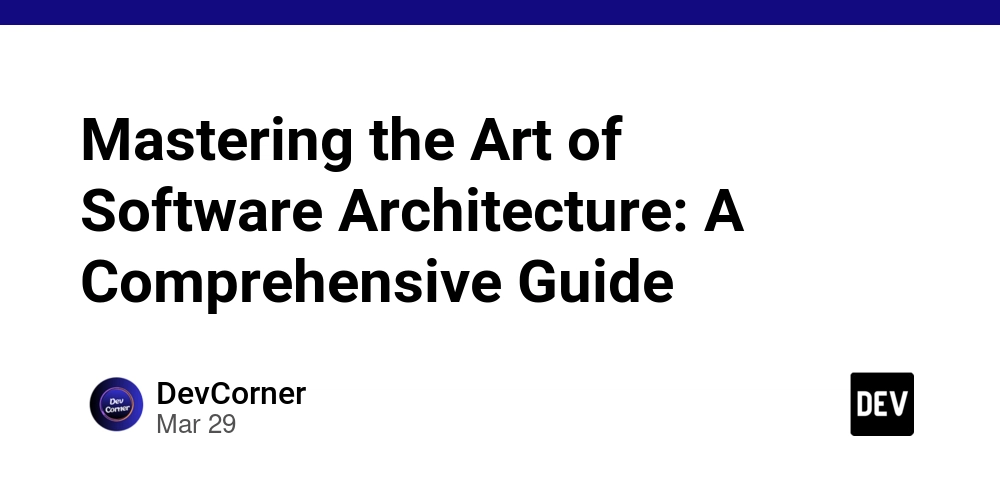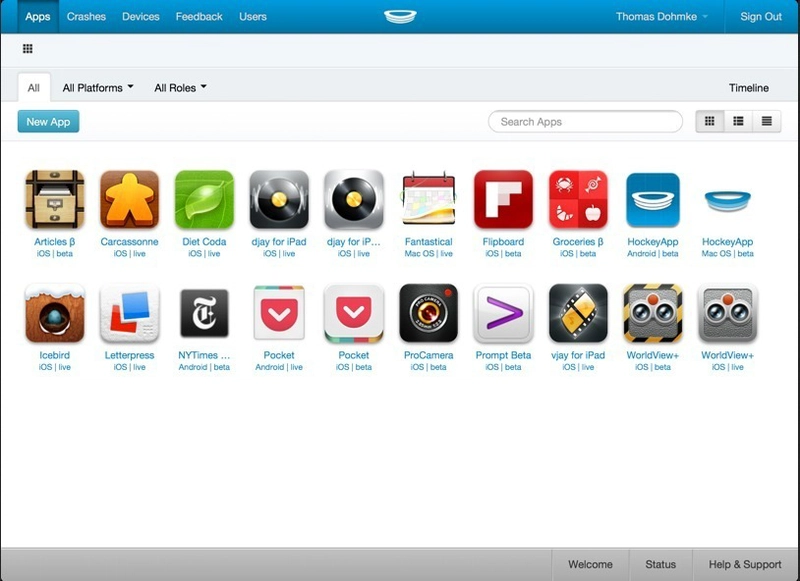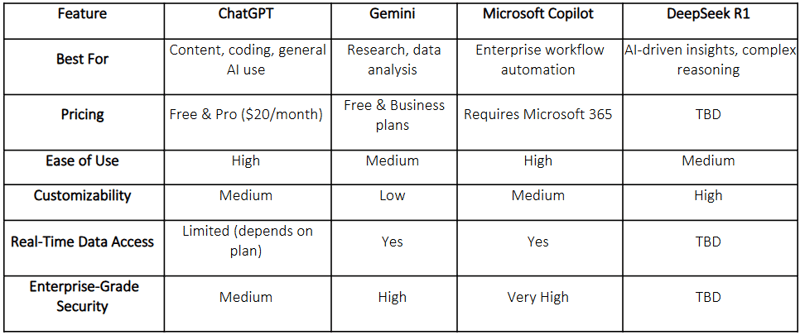Mastering the Art of Software Architecture: A Comprehensive Guide
Software architecture is the backbone of successful digital products, laying the foundation for systems that can evolve, scale, and withstand the test of time. This guide explores the multifaceted role of a software architect and provides a roadmap to mastery with carefully curated resources. What is Software Architecture? Software architecture refers to the high-level structure of a software system - the way its components are organized, interact, and address the system's quality attributes. It's the blueprint that guides development teams through implementation while balancing technical requirements with business goals. A well-designed architecture addresses: Scalability and performance Maintainability and flexibility Security and reliability Cost-effectiveness and business alignment The Software Architect's Role The software architect serves as the technical visionary, bridge-builder, and strategic decision-maker within development teams. Their responsibilities include: Technical Leadership Designing system structures and selecting appropriate technologies Making architectural decisions that align with business objectives Establishing technical standards and best practices Creating architectural documentation and diagrams Communication Translating business requirements into technical solutions Communicating complex technical concepts to non-technical stakeholders Mentoring developers and fostering technical growth Facilitating collaboration between development teams Strategic Thinking Evaluating technical risks and trade-offs Planning for future growth and technological evolution Balancing short-term delivery with long-term sustainability Staying current with technological trends and innovations Core Architectural Patterns and Styles Understanding various architectural patterns forms the foundation of effective software design: Monolithic Architecture Traditional approach where all components are interconnected and packaged together. Simpler to develop initially but can become unwieldy as the application grows. Microservices Architecture Breaking applications into small, independent services that communicate via APIs. Offers flexibility, scalability, and technology diversity at the cost of increased operational complexity. Event-Driven Architecture System components produce, detect, and react to events. Excellent for decoupled, responsive systems where components need to communicate asynchronously. Layered Architecture Organizing components into horizontal layers (presentation, business logic, data access) with strict dependencies between adjacent layers. Creates separation of concerns but can introduce unnecessary rigidity. Hexagonal/Ports and Adapters Focuses on isolating the core business logic from external concerns like databases or user interfaces through defined "ports" and "adapters." Facilitates testing and allows technology substitution. Essential Skills for Software Architects Technical Expertise Proficiency in multiple programming languages and paradigms Deep understanding of distributed systems Knowledge of databases and data storage solutions Experience with cloud platforms and services Security awareness and best practices Non-Technical Skills Systems thinking and problem decomposition Business domain understanding Communication and presentation abilities Leadership and decision-making confidence Stakeholder management and negotiation The Path to Mastery: Learning Resources Foundational Books "Software Architecture in Practice" by Bass, Clements, and Kazman - Comprehensive coverage of architectural concepts, quality attributes, and case studies. "Clean Architecture" by Robert C. Martin - Principles for creating maintainable, flexible architectures independent of frameworks and technologies. "Building Evolutionary Architectures" by Ford, Parsons, and Kua - How to design architectures that support incremental change. "Fundamentals of Software Architecture" by Richards and Ford - Detailed exploration of architectural patterns, decisions, and the architect's role. "Designing Data-Intensive Applications" by Martin Kleppmann - Deep dive into data systems architecture for reliable, scalable applications. Advanced Books "Release It!" by Michael Nygard - Design patterns for stability and resilience in production environments. "Enterprise Integration Patterns" by Hohpe and Woolf - Comprehensive catalog of messaging patterns for system integration. "Domain-Driven Design" by Eric Evans - Connecting complex domain models to software implementations. "Building Microservices" by Sam Newman - Designing fine-grained systems that are resilient, scalable, and adaptable. "System Design Interview" by Alex Xu - Practical approaches to architecture design through interview problems.

Software architecture is the backbone of successful digital products, laying the foundation for systems that can evolve, scale, and withstand the test of time. This guide explores the multifaceted role of a software architect and provides a roadmap to mastery with carefully curated resources.
What is Software Architecture?
Software architecture refers to the high-level structure of a software system - the way its components are organized, interact, and address the system's quality attributes. It's the blueprint that guides development teams through implementation while balancing technical requirements with business goals.
A well-designed architecture addresses:
- Scalability and performance
- Maintainability and flexibility
- Security and reliability
- Cost-effectiveness and business alignment
The Software Architect's Role
The software architect serves as the technical visionary, bridge-builder, and strategic decision-maker within development teams. Their responsibilities include:
Technical Leadership
- Designing system structures and selecting appropriate technologies
- Making architectural decisions that align with business objectives
- Establishing technical standards and best practices
- Creating architectural documentation and diagrams
Communication
- Translating business requirements into technical solutions
- Communicating complex technical concepts to non-technical stakeholders
- Mentoring developers and fostering technical growth
- Facilitating collaboration between development teams
Strategic Thinking
- Evaluating technical risks and trade-offs
- Planning for future growth and technological evolution
- Balancing short-term delivery with long-term sustainability
- Staying current with technological trends and innovations
Core Architectural Patterns and Styles
Understanding various architectural patterns forms the foundation of effective software design:
Monolithic Architecture
Traditional approach where all components are interconnected and packaged together. Simpler to develop initially but can become unwieldy as the application grows.
Microservices Architecture
Breaking applications into small, independent services that communicate via APIs. Offers flexibility, scalability, and technology diversity at the cost of increased operational complexity.
Event-Driven Architecture
System components produce, detect, and react to events. Excellent for decoupled, responsive systems where components need to communicate asynchronously.
Layered Architecture
Organizing components into horizontal layers (presentation, business logic, data access) with strict dependencies between adjacent layers. Creates separation of concerns but can introduce unnecessary rigidity.
Hexagonal/Ports and Adapters
Focuses on isolating the core business logic from external concerns like databases or user interfaces through defined "ports" and "adapters." Facilitates testing and allows technology substitution.
Essential Skills for Software Architects
Technical Expertise
- Proficiency in multiple programming languages and paradigms
- Deep understanding of distributed systems
- Knowledge of databases and data storage solutions
- Experience with cloud platforms and services
- Security awareness and best practices
Non-Technical Skills
- Systems thinking and problem decomposition
- Business domain understanding
- Communication and presentation abilities
- Leadership and decision-making confidence
- Stakeholder management and negotiation
The Path to Mastery: Learning Resources
Foundational Books
- "Software Architecture in Practice" by Bass, Clements, and Kazman - Comprehensive coverage of architectural concepts, quality attributes, and case studies.
- "Clean Architecture" by Robert C. Martin - Principles for creating maintainable, flexible architectures independent of frameworks and technologies.
- "Building Evolutionary Architectures" by Ford, Parsons, and Kua - How to design architectures that support incremental change.
- "Fundamentals of Software Architecture" by Richards and Ford - Detailed exploration of architectural patterns, decisions, and the architect's role.
- "Designing Data-Intensive Applications" by Martin Kleppmann - Deep dive into data systems architecture for reliable, scalable applications.
Advanced Books
- "Release It!" by Michael Nygard - Design patterns for stability and resilience in production environments.
- "Enterprise Integration Patterns" by Hohpe and Woolf - Comprehensive catalog of messaging patterns for system integration.
- "Domain-Driven Design" by Eric Evans - Connecting complex domain models to software implementations.
- "Building Microservices" by Sam Newman - Designing fine-grained systems that are resilient, scalable, and adaptable.
- "System Design Interview" by Alex Xu - Practical approaches to architecture design through interview problems.
Online Courses and Learning Platforms
- Coursera's "Software Architecture" by University of Alberta - Comprehensive introduction to principles and practices.
- EdX's "Software Architecture & Design" by Georgia Tech - Deep dive into design patterns and architecture evaluation.
- Pluralsight's "Software Architecture: The Big Picture" by Allen Holub - Overview of architectural concepts and their application.
- Udemy's "Domain-Driven Design and Microservices" courses - Practical implementation of architectural patterns.
- AWS Architecture Center, Azure Architecture Center, and Google Cloud Architecture Center - Cloud-specific architectural approaches and best practices.
Blogs and Websites
- Martin Fowler's website - Thoughtful articles on architecture and design.
- InfoQ - Latest trends and in-depth articles on software architecture.
- Architecture Notes - Practical insights on software architecture.
- The Thoughtworks Technology Radar - Evaluations of emerging technologies and practices.
- High Scalability blog - Case studies of architecture for high-scale systems.
Podcasts
- Software Engineering Radio - In-depth interviews with experts on architecture topics.
- The Changelog - Conversations about software development and architecture.
- Software Engineering Daily - Daily discussions on various technical topics.
- The Architecture Show - Focused specifically on software architecture.
- ThoughtWorks Technology Podcast - Discussions on software delivery and architecture.
Communities and Forums
- Stack Overflow - Q&A platform for specific technical questions.
- Software Engineering Stack Exchange - More conceptual architectural discussions.
- Reddit's r/softwarearchitecture - Community discussions and resource sharing.
- IEEE Software Architecture Working Group - Academic and industry resources.
- Meetup Software Architecture Groups - Networking with fellow architects.
Practical Steps to Grow as a Software Architect
Gaining Experience
- Lead design discussions in your current role
- Contribute to architectural decisions on existing projects
- Create proof-of-concept implementations to validate ideas
- Refactor problematic systems to improve their architecture
- Review architecture of open-source projects
Building Your Portfolio
- Document your architectural decisions and their outcomes
- Create architecture diagrams for systems you've designed
- Write technical blog posts explaining architectural concepts
- Contribute to open source projects that align with your interests
- Develop side projects that demonstrate architectural patterns
Continuous Learning
- Set learning goals for specific architectural styles or domains
- Participate in architecture katas - exercises that build design muscles
- Shadow experienced architects in your organization
- Seek feedback on your architectural decisions
- Stay current with emerging technologies and trends
Measuring Architectural Success
Effective architectures can be evaluated across multiple dimensions:
Technical Metrics
- System performance under load
- Time required to implement new features
- Number and severity of production incidents
- Code complexity and maintainability metrics
- Technical debt accumulation rate
Business Metrics
- Time-to-market for new features
- Total cost of ownership
- Customer satisfaction and retention
- Business agility and ability to pivot
- Competitive advantage gained through technology
Conclusion
The journey to becoming a masterful software architect is continuous and multifaceted. It requires a blend of technical depth, communication skills, strategic thinking, and practical experience. By leveraging the resources outlined in this guide and consistently applying architectural principles to real-world problems, you can develop the expertise needed to design software systems that deliver lasting value.
Remember that great architecture isn't about creating perfect systems from the beginning, but rather about making informed decisions that allow systems to evolve gracefully over time. The best software architects balance technical excellence with pragmatism, always keeping business objectives and user needs at the forefront of their design decisions.












































































